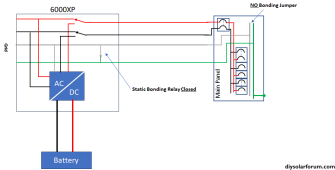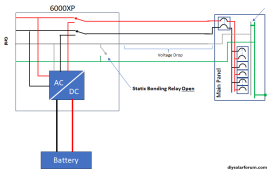Hello all!
I recently designed and built a relatively simple off grid system consisting of the new EG4 6000xp, 2x lifepower4 48v/100a batteries, and 16x 305watt panels.
So far I love the system and it is perfect for running a workshop, at least of my needs. While doing checks on the system during and after assembly I noticed roughly 40volts between the unit neutral and ground bar while under load. Additionally, if I probe between either of the lines and ground I will find 120volts. I have disabled the unit ground neutral bond as well as never installed on my 100 amp breaker that is attached to the AC out.
The unit is completely off grid and can be treated the same in its stock configuration? Is there an issue here, maybe a defective product or is it just my inexperience? Also worth mentioning is that the unit is functioning properly and does not display any faults.
Thank you in advance for any help or constructive criticism.
I recently designed and built a relatively simple off grid system consisting of the new EG4 6000xp, 2x lifepower4 48v/100a batteries, and 16x 305watt panels.
So far I love the system and it is perfect for running a workshop, at least of my needs. While doing checks on the system during and after assembly I noticed roughly 40volts between the unit neutral and ground bar while under load. Additionally, if I probe between either of the lines and ground I will find 120volts. I have disabled the unit ground neutral bond as well as never installed on my 100 amp breaker that is attached to the AC out.
The unit is completely off grid and can be treated the same in its stock configuration? Is there an issue here, maybe a defective product or is it just my inexperience? Also worth mentioning is that the unit is functioning properly and does not display any faults.
Thank you in advance for any help or constructive criticism.








